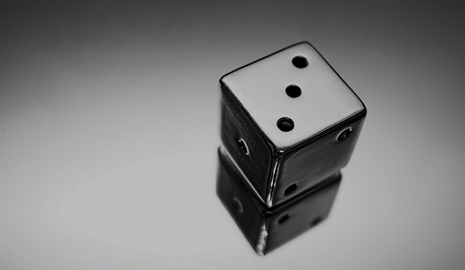A Lot of Work
 Two cubical dice each have removable numbers 1 through 6. The twelve numbers on the two dice are removed, put into a bag, then drawn one at a time and randomly reattached to the faces of the cubes, one number to each face. The dice are then rolled and the numbers on the two top faces are added. The probability that the sum is 7 can be expressed as
n
m
where
m
,
n
are relatively prime. Find
m
+
n
.
Two cubical dice each have removable numbers 1 through 6. The twelve numbers on the two dice are removed, put into a bag, then drawn one at a time and randomly reattached to the faces of the cubes, one number to each face. The dice are then rolled and the numbers on the two top faces are added. The probability that the sum is 7 can be expressed as
n
m
where
m
,
n
are relatively prime. Find
m
+
n
.
Image Credit: Flickr Mister P from F .
The answer is 13.
This section requires Javascript.
You are seeing this because something didn't load right. We suggest you, (a) try
refreshing the page, (b) enabling javascript if it is disabled on your browser and,
finally, (c)
loading the
non-javascript version of this page
. We're sorry about the hassle.
1 solution
So essentially we can ignore the dice completely, and just calculate the probability of pulling out two numbers from the bag that add to 7 . There are ( 2 1 2 ) = 6 6 combinations in total, 1 2 of which add to 7 , giving a probability of 6 6 1 2 = 1 1 2 .
Log in to reply
can you explain to me how to get 12 combinations?
Log in to reply
In the bag are the numbers 1 , 1 , 2 , 2 , 3 , 3 , 4 , 4 , 5 , 5 , 6 , 6 . So in pulling out two numbers at random, there are 4 ways of getting each of the combinations ( 1 , 6 ) , ( 2 , 5 ) , ( 3 , 4 ) , all of which provide a sum of 7 .
Upon rolling the first die, there are two outcomes on the second die that would yield a sum of 7 . There are 1 1 possible outcomes (not including the number on the first die already). Therefore the probability is 1 1 2 which implies an answer of 2 + 1 1 = 1 3
The key part was instead of putting on faces and then rolling, we first rolled and then put on the faces. Also notice how we don't care about the configurations of the other sides since they are irrelevant.
Problem Source: AMC 10 2009